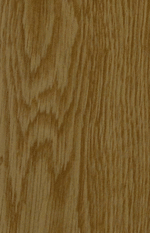Drifting

Visual drifting is by far the most common open-eye distortion. It can be described as the experience of objects and scenery appearing to become progressively warped and morphed across the visual field. These alterations gradually increase as a person stares, but are completely non-permanent - meaning that they reset to normal levels once a person double takes on the distortion.
This effect is capable of manifesting itself across 4 different levels of visual intensity which can be described as,
- Peripheral - The most basic form of distortion can be described as a 'wiggling' of straight lines within the external environment, which occurs exclusively within the peripheral vision and cannot be looked at directly.
- Direct - At this level, the distortions do not necessarily increase in visual intensity but can now be directly looked at within a person's central line of sight. This partially alters the appearance and form of shapes, objects and sceneries within the external environment, causing them to subtly drift, bend and morph.
- Distinct - This is the level at which distortions become visually powerful enough to drastically alter and transform the shape of specific objects within the external environment, often to the point where they can become unrecognisable in comparison to their original form.
- All encompassing - At the highest level of visual drifting, the intensity becomes powerful enough to distort not just specific objects beyond recognition, but every single point of a persons vision and the entirety of the external environment in its whole.
The particular style of this visual effect depends on the specific continuously changing direction, speed and rhythm of the distortion, resulting in a small variety of different manifestations.
Morphing
This effect is completely disorganized and spontaneous in both its rhythm and its direction. It can be described as objects or scenery appearing to gradually change in their size, shape, configuration and general appearance in a limitless number of ways.
Breathing
This effect makes objects or scenery appear to be steadily contracting inwards and expanding outwards in a consistent rhythm, as if the object or scenery was breathing in and out in a similar fashion to the lungs of a living organism.
Melting
It is not unusual for objects and sceneries to be completely or partially melting. They begin at lower doses as a gradual liquidization of objects which causes them to begin to droop, wobble, and slowly lose their structural integrity. This gradually increases until they become impossible to ignore with the lines, textures, and colour between solid objects appearing to melt into one another in an extremely liquid fashion.
Flowing
Flowing, shifting, rippling, or moving surfaces are a strong visual effect that seems to occur almost exclusively on textures, particularly if they are highly detailed, complex, or rough textures. A classic example of this would be wood grain or carpets flowing like a river in a seamless, looped animation. A consistent way to reproduce this visual is to stare at wood grain and lose focus.
-
Bedroom.
-
Mobile phone.
-
Living room.
Click here for full gallery.


